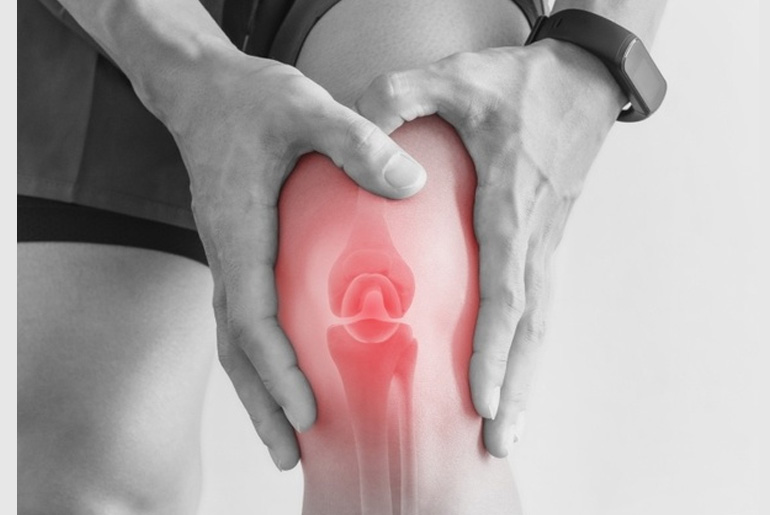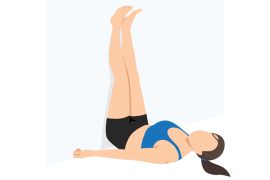In the world of strength training, whether you’re a seasoned gym-goer or just starting out, there’s a common experience shared by many: the risk of injury due to overconfidence or improper form. While the gym is a supportive environment, accidents can still occur, emphasizing the importance of prioritizing safety through correct technique and full attention when handling heavy equipment. Knee pain during exercises like squats is a frequent concern among weightlifters, often signaling an underlying issue. While injuries can’t always be prevented entirely, minimizing risk through proper form and mindfulness is crucial for a safe and effective workout experience.
Complexities of Knee Pain in Resistance Training:
Knee pain can affect anyone engaged in resistance training, especially those who neglect recovery and fail to address muscular imbalances. Patellar tendonitis, characterized by inflammation of the tendon attached to the kneecap, often presents as a burning sensation and is exacerbated by heavy lifting without adequate attention to form and recovery. Additionally, magnesium deficiency can contribute to this condition. Weightlifters may also experience knee pain due to strain and inflammation of soft tissues surrounding the knee, as well as tightness and spasms in hip and thigh muscles. Inadequate warm-up routines and chronic wear and tear on knee cartilage further increase the risk. Exercises involving knee flexion, such as squats and lunges, as well as high-impact movements, can intensify discomfort in this area.
Managing Knee Pain During Workouts:
When knee pain arises, it’s crucial to adjust your workout routine to minimize pressure on the affected area. Opting for simpler, modified versions of usual exercises or selecting alternative movements that engage the same muscles without aggravating the knee can be beneficial. Exercises with limited range of motion to reduce discomfort and advises avoiding high-impact movements. Understanding the specific area of pain and modifying exercises accordingly to prevent pushing the joint to its full capacity is essential for managing knee discomfort during workouts. Some alternative or modified movements that can help alleviate knee pain include partial squats, step-ups onto a low platform, leg presses using a lighter weight and focusing on controlled movements, and seated leg curls using resistance machines.
These exercises target similar muscle groups while minimizing stress on the knees. Additionally, incorporating low-impact activities such as swimming, cycling, or using an elliptical machine can provide cardiovascular benefits without exacerbating knee pain. Consulting with a physical therapist or certified fitness professional can also provide personalized guidance on modifying your exercise routine to accommodate knee discomfort while still achieving fitness goals.
Experiencing knee pain after weightlifting is a common issue that many people encounter. Several factors could contribute to this discomfort, including poor form, muscle imbalances, overtraining, or underlying injuries. Here’s why it might be happening and some steps you can take to address it:
- Poor Form: Incorrect form during exercises like squats, lunges, or leg presses can put undue stress on the knee joint. Ensure that your form is correct and that you’re not putting excessive pressure on your knees.
- Muscle Imbalances: Weakness or imbalance in the muscles surrounding the knee joint can lead to instability and pain. Strengthening the quadriceps, hamstrings, and glutes can help support the knee and reduce strain.
- Overtraining: Doing too much, too soon, or not allowing adequate rest and recovery time between workouts can lead to overuse injuries, including knee pain. Make sure to give your body enough time to rest and recover between weightlifting sessions.
- Inadequate Warm-Up: Skipping a proper warm-up before lifting weights can increase the risk of injury. Warm-up exercises like dynamic stretches, foam rolling, and mobility drills can help prepare your muscles and joints for the workout ahead.
- Inadequate Flexibility: Tight muscles and limited flexibility can contribute to knee pain. Incorporate stretching exercises targeting the muscles around your knees, such as quadriceps, hamstrings, calves, and hip flexors, into your routine to improve flexibility and reduce tension.
- Pre-existing Conditions or Injuries: If you have pre-existing conditions like arthritis or previous knee injuries, weightlifting may exacerbate the pain. Consult with a healthcare professional or physical therapist to understand how to modify your workouts to accommodate your condition and prevent further injury.
- Footwear: Wearing improper footwear, such as shoes with inadequate support or cushioning, can contribute to knee pain. Invest in proper footwear designed for weightlifting to provide stability and shock absorption.
- Cross-training: Incorporating low-impact exercises like swimming, cycling, or yoga into your routine can help improve overall strength, flexibility, and joint health without putting excessive strain on your knees.
- Listen to Your Body: Pay attention to any signs of discomfort or pain during and after your workouts. If you experience persistent knee pain, it’s essential to rest and seek guidance from a healthcare professional to determine the underlying cause and appropriate treatment.
In conclusion, knee pain after weightlifting can be caused by various factors, including poor form, muscle imbalances, overtraining, or underlying injuries. By addressing these issues through proper technique, balanced training, adequate rest, and seeking professional guidance when needed, you can help alleviate knee pain and prevent further injury.
Disclaimer:
The information contained in this article is for educational and informational purposes only and is not intended as a health advice. We would ask you to consult a qualified professional or medical expert to gain additional knowledge before you choose to consume any product or perform any exercise.







